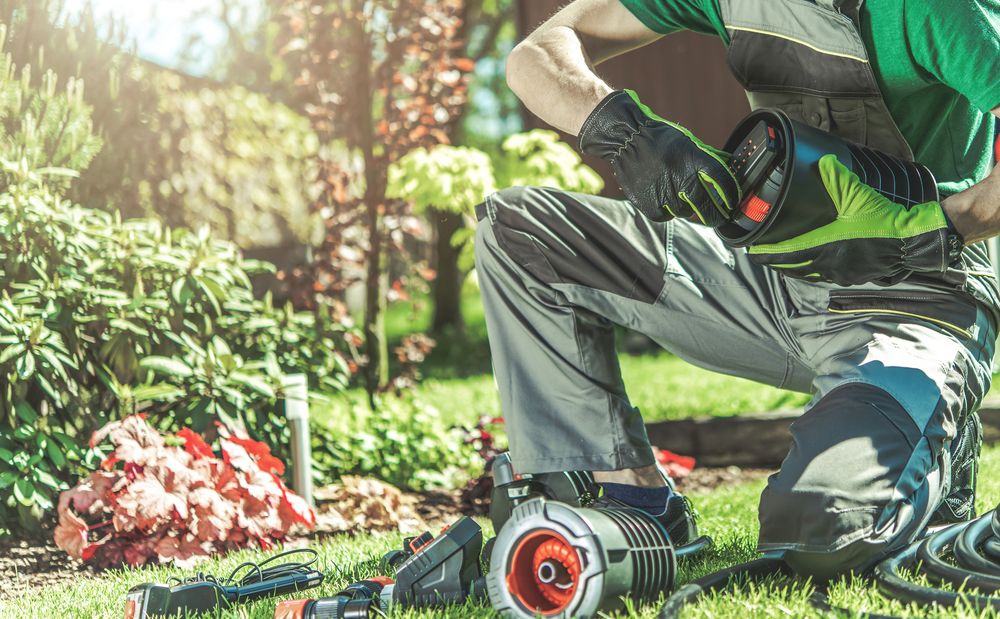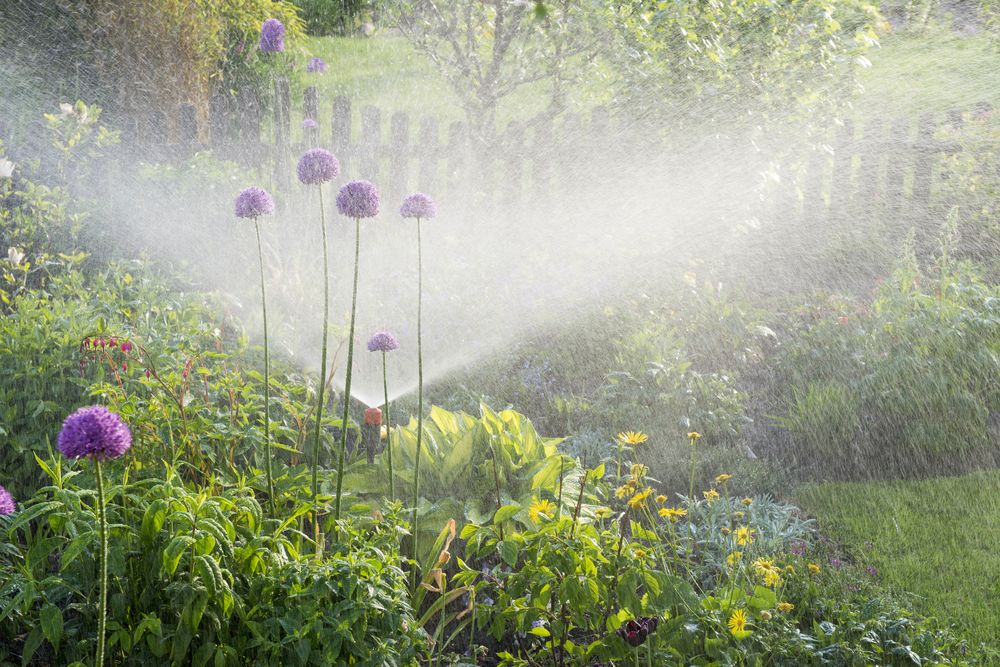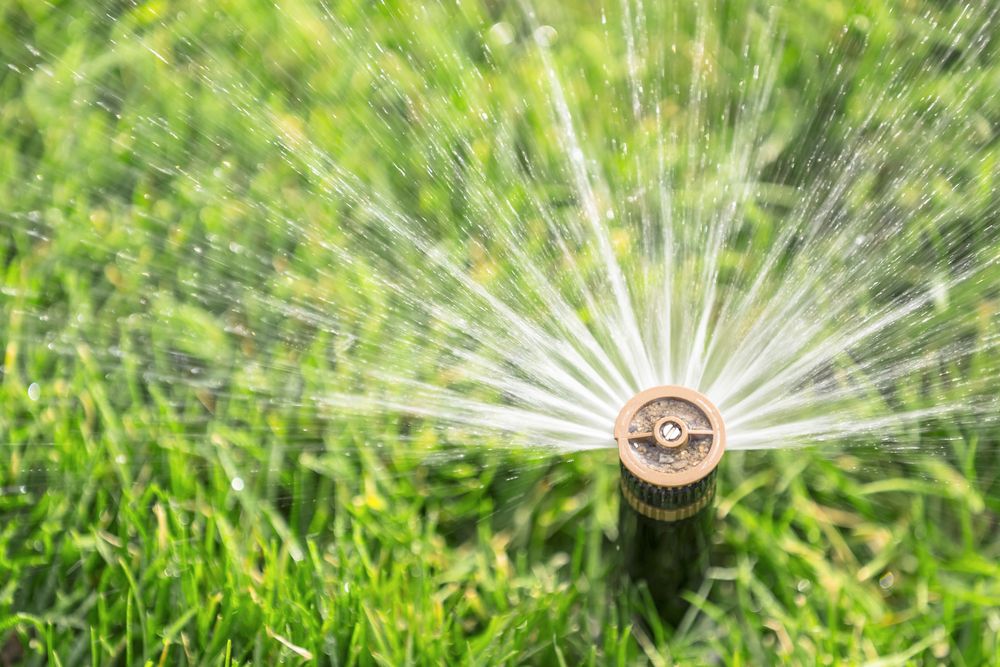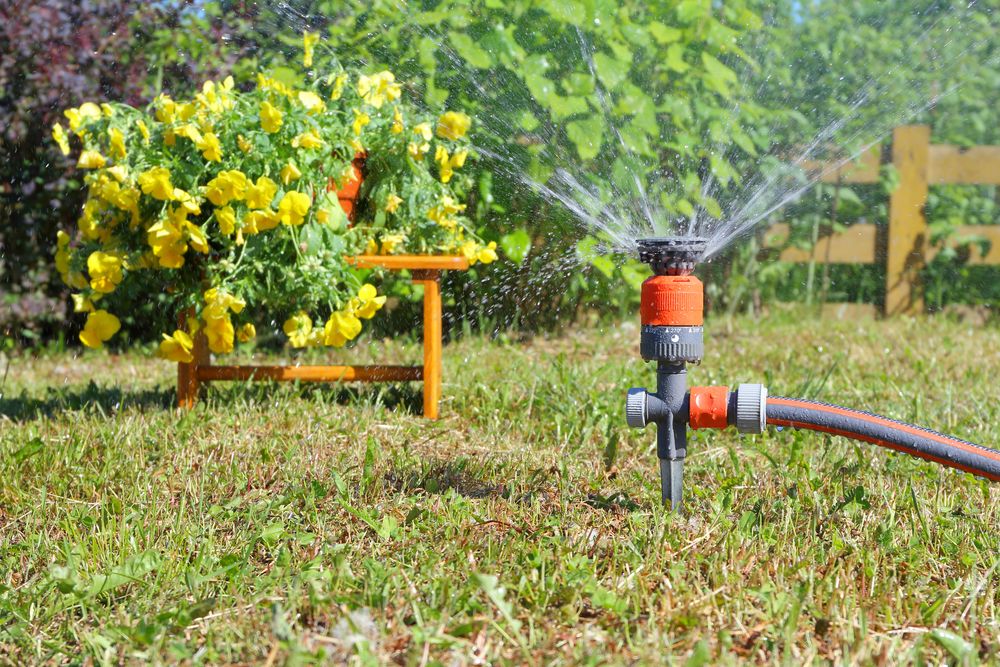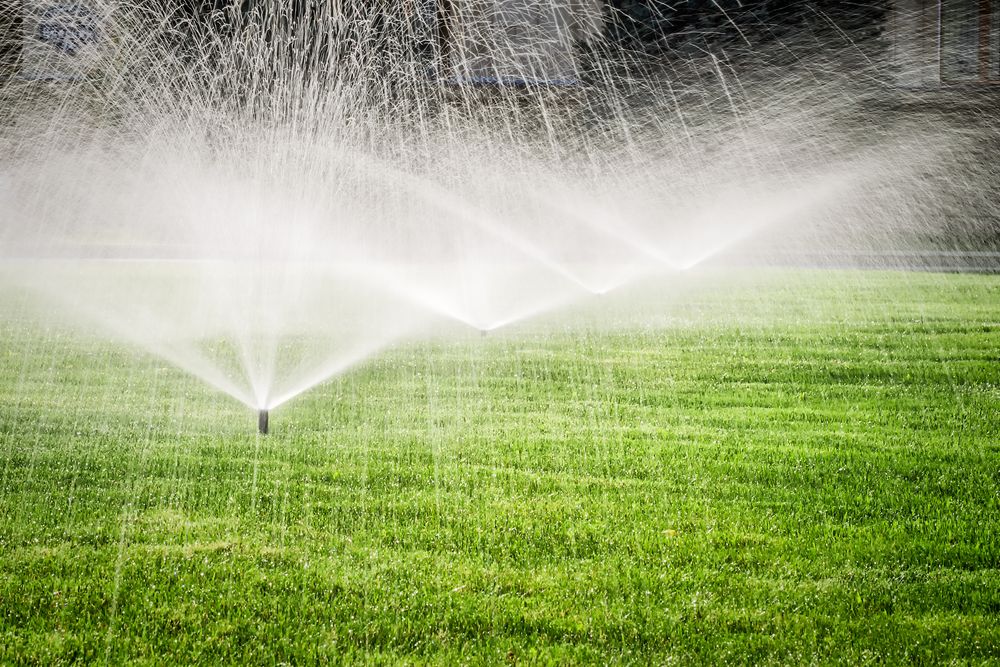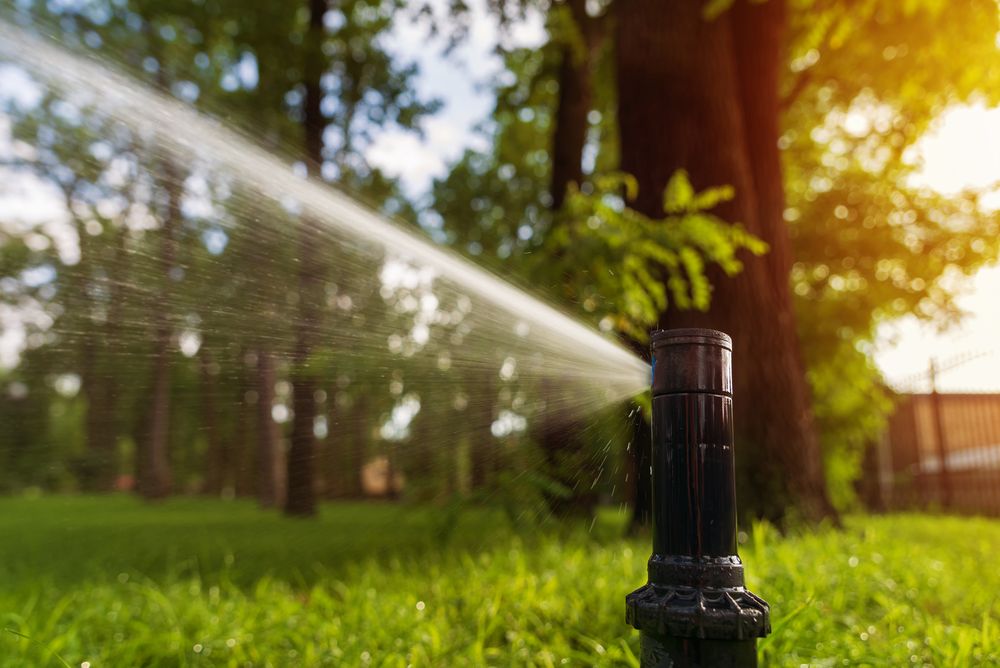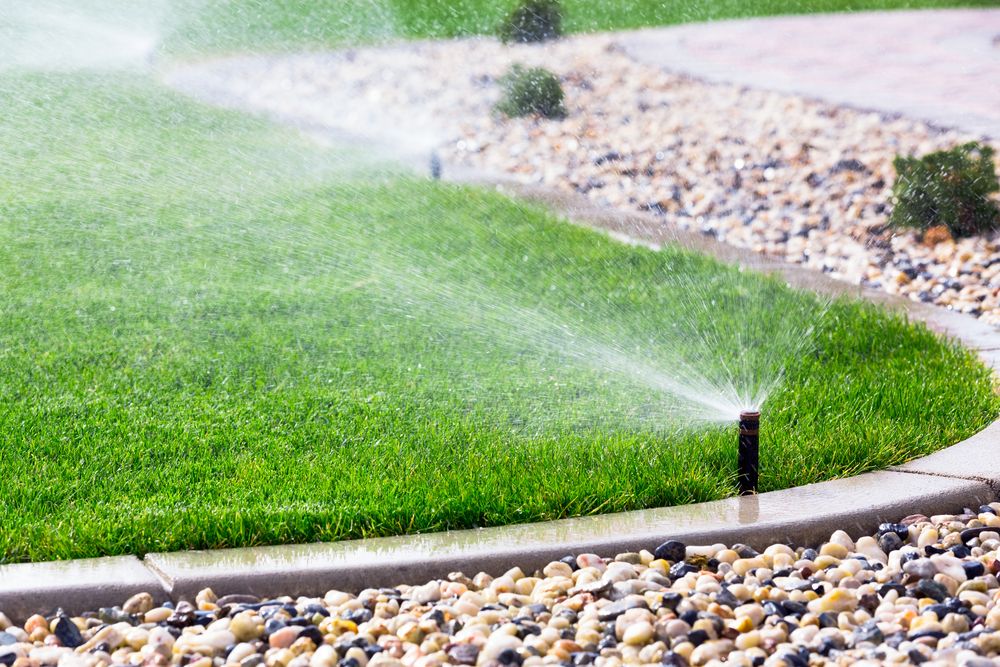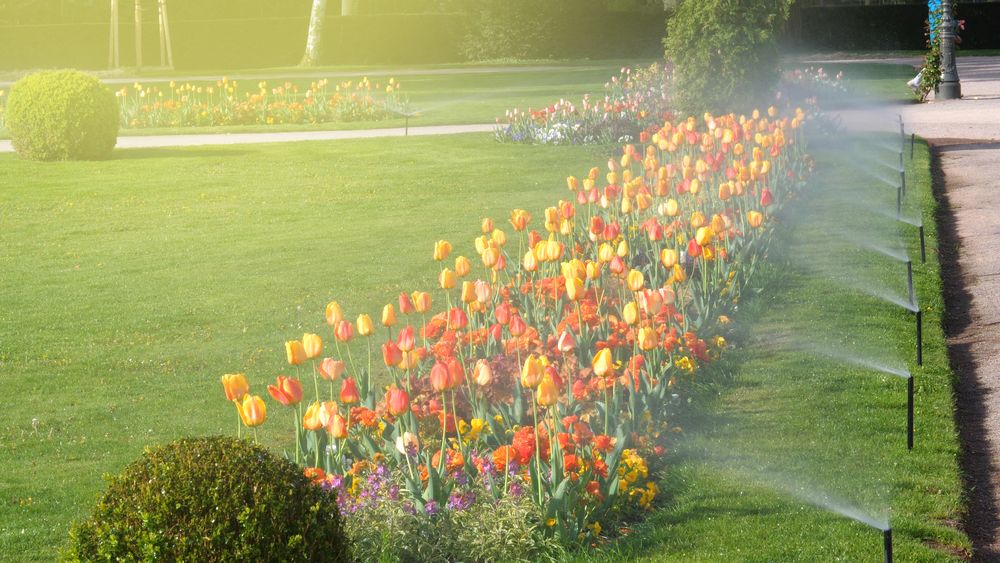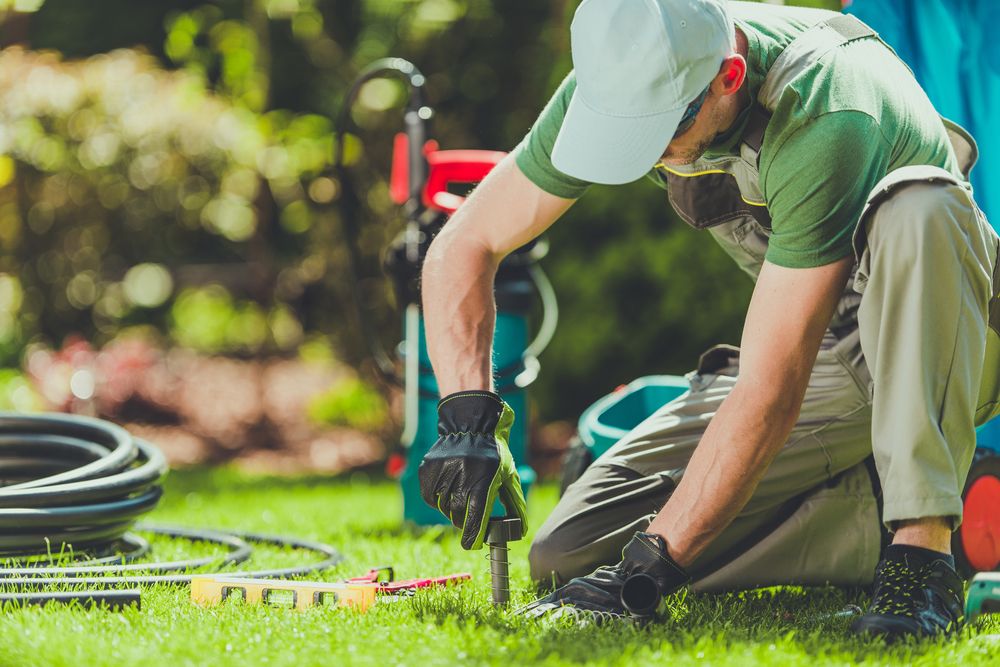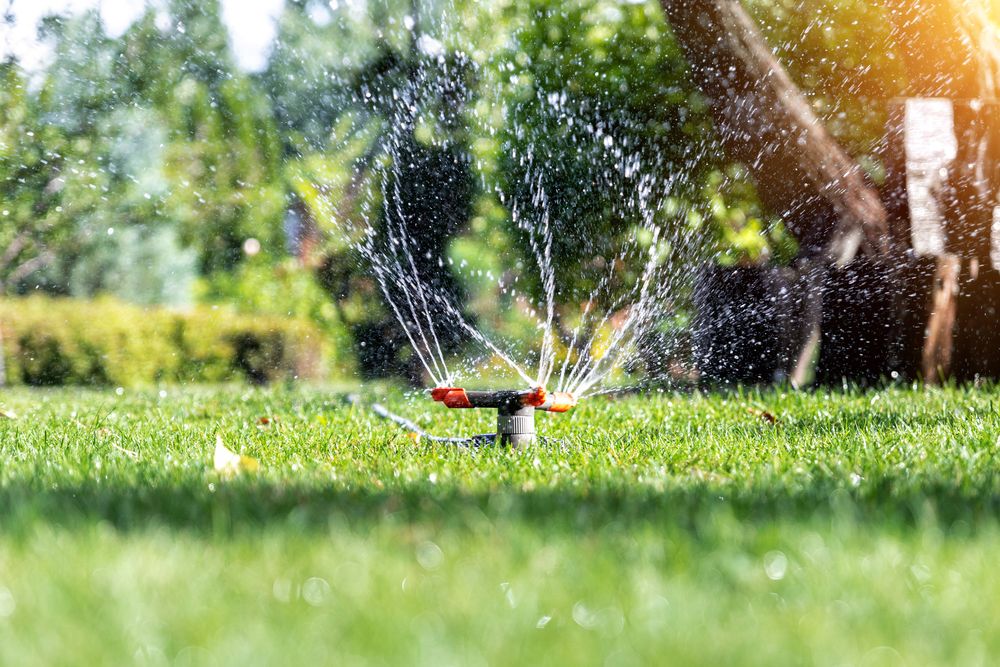Sprinkler Repair: 13 Best Tips and Tricks to Fix Irrigation Problems
If you’re like most homeowners, you rely on your sprinkler system to keep your lawn green and healthy. But what do you do when it starts acting up? This guide offers simple solutions for common sprinkler repair issues so that you don’t have to rely on a professional.
A sprinkler system is responsible for misting your lawn with water every day and keeping it hydrated during the heat of summer, ensuring that grass stays green, vibrant, and healthy-looking.
However, problems can occur, like a sprinkler head that gets stuck opened or closed, causing more water to flow than necessary. This can quickly lead to waterlogging, which will kill the grass and might even damage your plants or flowers.
If you’re having problems with your sprinkler system, don’t panic. There are ways to troubleshoot and repair it without too much hassle. The safest sprinkler repair solution is by reaching out to an expert.
Irrigation systems can be challenging, and you might stumble upon unpleasant surprises, so it’s always best to consult with a professional before starting any repairs.
However, if you feel like taking on this task yourself to save some money, we’re here to give you some advice. Keep reading to find out everything you need to know about repairing a sprinkler system, including components and common issues.
Sprinkler System Parts
It’s important to correctly identify the parts of an irrigation system so that you won’t fidget around the instruction manual every time you need to pick up a tool and shift your attention to a certain component.
Here’s what you need to know before attempting any sprinkler repair:
Controller
The sprinkler controller turns the water on and off, usually located in a small box near your yard’s water meter.
Valves
They connect to the pipe from the home’s plumbing system and control the output water flow.
Valve Box
It’s a small box on top or below the ground, which houses the control valves. It protects the valves from harsh weather conditions, lawn pests, and naughty pets, like a dog that likes to dig.
Pipes
They run above or below ground from the valves to the flowerbed, lawn, or someplace else.
Irrigation Heads
These typically attach to the end of these pipes and emit a spray pattern when activated by a valve. Multiple types of irrigation heads are available, including rotors, drip lies, impact sprays, bubblers, and emitters.
Water Pump
It moves water from your home’s plumbing system to the valves. A single-booster pump is enough for a small irrigation system – anything larger requires a multi-irrigation pump.
Water Meter
It measures how much water your sprinkler system is using so you’re not charged for more than you use. It’s also an eco-friendly solution for maintaining a sprinkler system.
Pump Controller
It connects to the sprinkler system and its sensors to monitor the water flow and pressure. The controller ensures that the pump switches off when your sprinkler system shuts down and that each zone is receiving the proper amount of water, according to your programming preferences. Plus, it notifies you of any errors and automatically switches off the system in case of an emergency.
Backflow Preventer
It stops dirty water from entering the sprinkler system from outside sources, such as rainwater or pets, like a dog digging around in your flowerbed. The backflow preventer also prevents dirty water from leaving your sprinkler system and entering your household pipes.
Timer
It’s set to a certain schedule – daily, every other day, and so on. The timer also activates the valves according to this schedule.
Common Issues with Sprinkler Systems
An irrigation system can start malfunctioning for various reasons. Although a professional might be able to quickly point out the issue, it’s definitely a challenging task for someone untrained.
Here are some common issues you should be aware of when it comes to sprinkler repair:
Broken Valves
It’s not uncommon for sprinkler valves to break or wear out. When a valve attached to a zone fails, the affected zone stops working while the rest of the system continues to run. This can cause water waste and unnecessary maintenance.
Broken Sprinkler Heads
Sprinkler heads are often the first part of a system to break down. When they do, water can spray in all directions, creating big puddles and wet spots in places you don’t want them.
Broken or Loose Pipes
Sprinkler systems are connected by PVC piping, which may degrade over time or break when subjected to too much pressure. When a pipe breaks, it can interrupt the water flow and cause the entire system to fail.
Inactive Sprinkler Zones
You may find that you have inactive zones in your sprinkler system – meaning the valves are on, but there is no water running. Perhaps it’s a programming issue, or maybe it indicates a more serious problem.
Low Water Pressure
Although most sprinkler systems rely on low pressure, a test will show if it’s too low. This could indicate a blockage in a system line or valve, a bad sprinkler head, a damaged pipe, or an obstruction in the water supply.
Clogged Backflow Preventer
If your system has a backflow preventer, it’s important to keep it clean and functioning properly. Otherwise, it will clog and cause water to overflow in your yard.
Leaks in the Waterline
If a sprinkler system is losing too much water, it may be time to inspect the line for leaks, cracks, or dents. While some leaks are immediately obvious, gas-charged systems can lose a lot of pressure without any visible signs of a leak. You can use a hydrometer to check for leaks in these systems.
How to Repair Your Sprinkler System
Here are the steps you need to take for sprinkler repair:
1. Check the Backflow Device
The first thing you need to do is check the backflow device. This is a critical piece of your irrigation system that will cause all sorts of problems when it fails to work properly.
Check that the water valves are fully turned on at the backflow device. Otherwise, it could be why you’re experiencing low water pressure.
If the backflow device is defective, you’ll need to replace it. You can find replacement parts at most home improvement stores.
2. Test the Voltage and Resistance of the Sprinkler Zones
You’ll need to check the voltage of each sprinkler zone if you suspect that there is a problem with your solenoid valve.
- Turn off the water valves for the problematic zones.
- Check if any wires in the controller are disconnected or damaged.
- Remove all of the wire nuts connecting wires together in that zone at one time.
- Use a multimeter to test the controller – it should be between 24 to 28 volts. If the voltage is too low or too high, you have to replace the controller.
- Set the multimeter to resistance mode and use it to test the solenoid – it should be between 20 and 60 ohms.
- If it’s below 20 ohms, you have to replace the solenoid.
- Otherwise, If it’s over 60 ohms, cut off a few inches from the solenoid wire and rerun the test. If it’s still over 60 ohms, you have to replace the solenoid.
3. Check the Voltage of the Transformer
Before putting your multimeter aside, you can use it to test the transformer:
- Set your multimeter to voltage mode.
- Identify the transformer terminals on the controller – they are marked with 24-vac.
- Connect the multimeter to the transformer terminals and check the voltage – it should be above 24. If the reading is less than 24, it’s necessary to replace the transformer.
4. Fix a Blown Fuse
If the controller isn’t working, it may be because the fuse has blown. To fix this, simply replace the fuse with a new one of the same size and rating.
5. Replace the Controller to Repair Your Sprinkler System
- Turn off the power to the sprinkler controller.
- Remove the screws from the panel.
- Locate and remove the circuit board.
- Check for broken or disconnected wires. If they are in good condition, you can reattach them to the new controller.
- Install the new controller by following the manufacturer’s instructions. If you’re doing this outside, be sure to protect the wires with a PVC pipe.
- Connect the wires and valves to the power supply.
- Turn on the power to the controller.
- Program the new irrigation schedule.
6. Repair the Sprinkler Valve by Cleaning its Components
- Switch off the controller of the sprinkler system.
- Turn off the main water supply.
- Dismantle the valve by removing the jar top or bonnet screws.
- Carefullyremove the diaphragm and spring.
- If you notice any dirt in the diaphragm or valve body, clean it with fresh water.
- If the diaphragm, spring, or seal is damaged in any way, you have to replace the valve.
7. Replace the Sprinkler Solenoid to Repair the Irrigation System
If you find that there is power running through any wire, it means that the solenoid valve is damaged and needs to be replaced.
- Turn off the controller of the sprinkler system.
- Remove the wires from the solenoid valve.
- Unscrew the solenoid from its case and remove it.
- Install the new solenoid valve.
8. Replace the Transformer
- Unscrew and remove the transformer wires in the terminal.
- Discard the old transformer and add the new one.
- Connect the wires of the new transformer to the controller.
- Insert the wires in the new transformer’s terminal and screw them in place.
9. Check the Sprinkler Head
If you notice low water pressure in a sprinkler head, it could be caused by the debris. In this case, you should be able to quickly solve this problem by thoroughly cleaning the sprinkler head. Do this with a wet and clean rag after turning off the water supply.
10. Repair Sprinkler Heads
If you’re only dealing with one or two sprinkler heads that aren’t working, you can probably repair them yourself. Just remove the head from the ground and replace the nozzle or bonnet.
11. Check the Water Flow Direction at the Valve
An irrigation professional should have no trouble installing a sprinkler system correctly. However, problems like an incorrectly installed valve are prone to happen now and then.
It’s essential to check the water flow direction at the valve to ensure that it’s correct. Otherwise, you risk doing severe damage to the internal components of the sprinkler system, which may lead to reinstalling the whole thing.
And, if the valve was accidentally installed backward, be sure to reinstall it correctly by following the user manual provided by your manufacturer.
12. Unclog the Backflow Preventer
If you notice that some areas of your yard don’t get water during rainy periods or after a heavy downpour, it’s possible that the backflow preventer has clogged. You can do this by following these simple steps:
- Turn off the controller and valves.
- Remove the top of the backflow preventer.
- Look inside and remove any debris that you see.
- Replace the top of the backflow preventer and turn on the controller and valves.
- Check for water leaks. If you find any, tighten the screws on the top of the backflow preventer until they’re snug.
- Test the sprinkler system by running it for a few minutes to ensure everything is working correctly.
13. Fix Waterline Leaks in the Sprinkler System
Identifying and repairing waterline leaks and cracks is a more intricate process that requires additional steps. Here’s what you need to do:
1. Turn On the Irrigation System
Switch on your sprinkler system to see the parts from which the water is escaping. It’s best to do this during a sunny day to have maximum visibility. It may be challenging to find if the leak is small, but don’t give up.
If the irrigation system works in zones, it’s easier to turn on the water for one zone and check it for leaks before moving on to the next zone.
2. Check for Leaks or Cracks
You can check an above-ground sprinkler system by quickly investigating cracks or leaks in the sprinkler line. If you find the culprit, highlight it with a waterproof marker.
When it comes to underground irrigation systems, check for any small flooded areas in the sprinkler line or water that bubbles up from the soil. If you spot the area, place a big rock or something similar to quickly identify it later.
Another way to identify leaks or cracks in an underground system is by checking the sprinkler heads. If they are placed in a series, try to tell which head is sprinkling a lesser amount of water. In that case, you will find the waterline crack between the last working head and the first broken head.
3. Turn Off the Water Supply
Once you’ve identified the leaks, it’s time to deactivate the water supply. There should be a shut-off valve near the sprinkler head that you can turn off to stop the water flow. Make sure to wait a few minutes until the entire sprinkler line is cleared of water.
4. Reach the Underground Sprinkler Line
If your irrigation system is underground, you need to reach it to be able to fix the leak. To do this, use a hand trowler since it’s gentler than a shovel. Dig around the waterline so that you don’t accidentally damage it.
It’s best to make a square cut since adding the patch back to the soil will be easier once you finish repairs. Furthermore, it’s best to cut a patch of dirt deep enough to sustain the grass above it. If the grass crumbles, it will take a while to grow back, and your lawn will look imperfect in the meantime.
If you find a crushed section of the waterline, it could be caused by overgrown tree roots or heavy objects placed above the ground.
5. Clean the Exposed Waterline to Repair the Lawn Sprinkler
Before fixing the crack in the waterline, it’s crucial to prevent any dirt from getting inside. Any debris that penetrates the sprinkler system might clog, causing more problems down the road. You can use a clean and wet cloth to clean the waterline; detergent or a cleaning solution is unnecessary.
6. Repair the Broken Water Pipe
- Use a hacksaw to make clean cuts on the damaged section of the waterline – both edges must be even.
- Remove and discard the broken part.
- Add a band clamp to each end of the waterline, but don’t tighten the clamps just yet.
- Insert a slip coupling into the missing section and adjust it until it fits – it extends for as long as necessary.
- Tighten the two clamps with a screwdriver to seal the sprinkler waterline.
7. Check for Any Further Leaks
Before putting the soil patch back into the ground, you need to check your sprinkler system for further leaks. To do this, turn on the water supply, wait for a few minutes, and inspect the exposed section of the waterline.
The slip coupling and band clamps should hold up. Otherwise, you need to reassess the situation and recheck your work. If it becomes too confusing, don’t hesitate to resort to a professional.
If everything is fine, return the patch of soil to the ground and check for leaks in other areas of the sprinkler system.
Sprinkler Repair Pricing
If you’re having difficulty locating or repairing a leak in your sprinkle system, don’t hesitate to call a professional plumber for assistance. A good plumber can quickly identify and fix any leaks in your system, so you can get back to enjoying your garden.
The cost of fixing an irrigation system depends on various aspects, like where you live and what type of problem you have. For instance, if you need to replace a sprinkler head, a contractor charges you between $5 and $20. Replacing a valve may cost anything between $20 and $40; this doesn’t cover the labor cost, typically around $75 per hour.
Sprinkler Repair FAQ
Discover more information about fixing and maintaining an irrigation system.
How to adjust sprinkler heads?
Sprinkler heads often need to be adjusted if the water isn’t reaching all parts of your lawn. Move the sprinkler heads around and try changing the length and angle of each facing.
How to extend a broken underground sprinkler line?
If you can’t use a pipe cutter or don’t have an extra section of PVC, you can use a hacksaw to extend the line. Cut two pieces of PVC that are each 1-2 feet longer than the break. Make sure the cuts are straight and even on both sides.
How to install a sprinkler system?
- Locate the area where you want to install the sprinkler system. It’s best to install it in an open space, like a lawn or garden.
- Mark the spot where you will be digging the trenches for the waterlines with a shovel or stick.
- Dig the trenches for the waterlines using a shovel. The channels should be at least 12 inches deep and 24 inches wide.
- Lay the waterlines in the trenches and connect them to each other – make sure they’re straight and even.
- Cover up the waterlines with soil and pack them down to stabilize.
- Connect the sprinkler heads to the waterlines and bury them in the soil.
- Turn on the water supply and check for any leaks.
How to winterize a sprinkler system?
If you’re interested in blowing out your sprinkler system to prevent water from freezing inside the pipes during wintertime, here’s what you need to do:
- Turn off the water supply to the sprinkler system.
- Drain the water from all of the irrigation lines and sprinkler heads.
- Next, disable the timer.
- Attach an air compressor to the irrigation system.
- Blow out the sprinklers.
- Disconnect the hoses from the sprinkler system.
- Pack any snow or ice on top of the sprinkler head with a shovel.
- Cover the sprinkler system with insulation.
- Turn on the water supply and inspect the system for any leaks.
How to replace a sprinkler head?
You can change a sprinkler head by using a wrench or screwdriver. First, make sure to disable the water supply to the sprinkler system and drain the water from all of the irrigation lines and sprinkler heads.
Also, ensure that the replacement head is compatible with your irrigation system. Reattach the sprinkler head to its base and tighten the screws. Then, restart the water supply and check for leaks.
How much does a sprinkler system cost?
A sprinkler system typically costs between $300 and $3,000, depending on the size and complexity of the system. However, some homeowners choose to install their own systems, costing as little as $300.
How to drain a sprinkler system?
To prevent standing water from damaging your lawn or garden, drain the sprinkler system before you start digging. You can easily do this by turning off the water supply to the irrigation system, then identifying and removing a valve located near each section where the pipe connects.
How to cap a sprinkler head?
You can use an adjustable wrench to cap a sprinkler head by gripping the head and turning it counterclockwise until it is completely unthreaded. Then, screw in an appropriately sized rubber cap onto the threaded pipe.
How to design a sprinkler system?
Designing a sprinkler system typically involves using an online design tool or buying a guide that you can follow step-by-step. After determining the size of your lawn, click on the different shapes of spray heads to decide which ones will work best for your space.
How often should I water my lawn?
You should water your lawn every day to keep it healthy. If you live in an area that sees a lot of sun or wind, water the lawn more frequently. But don’t forget to prepare for winter by blowing out your irrigation system to prevent water from freezing.
How many sprinkler heads per zone do I need?
The number of sprinkler heads you need per zone is determined by your water pressure, lawn size, and watering techniques. For example, a higher pressure requires more sprinklers to ensure that the area gets enough water.
And if you’re using landscape irrigation or drip irrigation instead of traditional overhead sprinklers, you will need fewer heads.
How to clean a sprinkler head?
You can clean a sprinkler head by using a screwdriver to remove the top. Be careful not to damage the plastic or metal parts. Then, use a brush to clean any dirt or debris from the inside and outside the head.
Finally, reattach the top and tighten the screws. Turn on the water supply and check for leaks.
Final Thoughts on Sprinkle Repair
It may seem daunting at first to repair a sprinkler system, but it’s relatively straightforward. By following our instructions, you can fix your sprinkler system in a jiffy. However, if you’re not comfortable making any of the repairs or adjustments listed in this article, don’t hesitate to hire a professional.
What kind of issues have you stumbled upon when trying to fix your sprinkler system? Share your experience with us in the comment section below!
